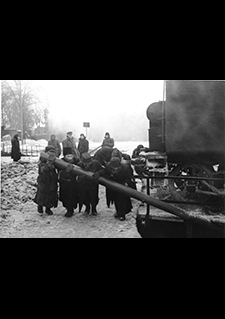Mobilization and Forced Labor
Military mobilization intensified the problems already existing on the German labor market. The Wehrmacht deprived the labor market of some 3.4 million workers between May of 1939 and the end of 1940 alone. Women could have been drawn on as workers in order to offset and compensate the loss.
The Nazi regime however shrank from this step, which other countries such as England had soon taken, for ideological reasons: The National Socialist view of the world held that women ought to be mothers first and foremost. Women in the “Third Reich” were therefore mobilized for labor service only to a limited extent and comparatively late.
The Nazi regime resolved the labor shortage by bringing in huge number of workers from all of the conquered territories to perform forced labor. In 1945, around 5.9 million forced laborers and an additional 1.9 million prisoners of war from twenty-six countries and 400,000 concentration camp inmates worked in the German Reich, usually under conditions resembling slavery.
Altogether, approximately 9.5 to 10 million foreign civilian workers and prisoners of war are estimated to have been used as forced labor in Germany. Over 30,000 work camps existed in Germany. Thousands of camps were in the occupied territories since only part of the transported workforce reached Germany.
Around 2.8 million of the altogether roughly 9.2 million Soviet civilians “recruited” for labor service were deported to the German Reich as civilian “Eastern workers”; 6.4 million performed labor service in the occupied territories.

